If you want the most accurate and reliable ammo that you can make, then choosing a good powder should be your primary concern. There are many different factors that will go into choosing the correct powder for you, and there are almost as many powder options out there as there are reloaders! Navigating through the plethora of options can seem very daunting at first but by the time you are done reading this article you will not only have all the information that you need to choose the perfect powder for your needs, but you will have a few good options to start with as well. If you would like to learn more about powder types, burn rates, storage, and charge weights, then keep on reading!
Short On Time? Here Is The Bullet List
- Best Powder for .223: Hodgdon H4895
- Best Powder for .308: IMR 4064
- Best Powder for General Purpose Pistol: IMR Trail Boss
- Best General Purpose Shotgun Powder: Alliant Red Dot
- Best General Purpose Rifle Powder: IMR 4350
- Best Magnum Handgun Powder: Hodgdon H110
- Best Magnum Rifle Powder: Hodgdon H1000
**Below are our more detailed reviews.
Where to Find Reloading Powder
Knowing where to find a good supply of powder is often half the battle. Due to the wide variety of gunpowder brands available, you will find very few places that stock every kind of powder. Because of this, most people stick with some of the more popular, easier to find powders for their hand loads. Since reloading powder, in general, is not a very popular item, most brick and mortar stores do not have an extensive inventory in general. This fact drives many people to purchase powder online.
In a Store
If you are purchasing powder in single pound increments, it is far more financially beneficial to get it from a brick and mortar store. While most of the big box sporting goods stores carry a very limited selection, most of the smaller mom and pop gun shops will have a little bit larger selection. If you do decide to go this route, be prepared to shop around. You may have to visit several shops before you find the powder that will suit your needs. Also, be prepared to compromise on your primary choice a bit. This is where it will be handy to carry a powder burn rate chart with you. This will allow you to select a comparable product to your primary choice in the event that you can’t find what you really want.
Online

If you know what kind of powder that you want, and want to purchase a large quantity of it, then going online may be the best bet. Purchasing powder online will give you access to any kind of powder that you would like, and often at a slightly better price too. There is a catch, however. Ordering powder online will cost you a hefty hazmat shipping fee, which sometimes can cost more than the powder itself! Because of this, most online powder orders are large in quantity in order to distribute the shipping cost more. If you do a large volume of reloading and plan to purchase upwards of 10 pounds of powder, or are able to place one order for your group of friends and distribute the cost that way, then your best bet may be ordering online.
Know The Types of Powder For Reloading
Reloading powder is hands down, the most important reloading component. Using the wrong type or weight of powder can often have catastrophic effects, and even has the potential to kill you. Modern gunpowder is nothing to be messing around with unless you know what you are doing, and as such you should make sure you really do your research and carefully follow instructions before you make your powder selections and begin reloading.
There is no such thing as a “one size fits all” powder, and trying to treat it as such can have horrible consequences. Before you begin, you will need to get a reloading manual and follow the instructions in it to a T. Do not try and substitute different reloading powder brands, granule size, or charge weight. There are many different factors that go into making each powder unique, and as such there are very few that are interchangeable.
Smokeless vs. Black Powder
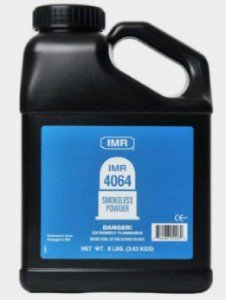
When picking out the best powder for you, the first thing you are going to want to figure out is if you want smokeless powder or black powder. 99 times out of 100, you are going to go with smokeless powder. Modern smokeless powder has a much faster burn rate and is much more powerful than black powder. This is why it is very important not to get the two confused. Reloading modern ammo with black powder will more than likely result in a squib load, which is where the gun fires, but does not provide enough energy for the bullet to leave the barrel.
Reloading a black powder rifle or cartridge with smokeless powder will more than likely cause a catastrophic failure, which is where the firearm explodes. In most cases, it will be very easy for you to tell which powder to use. For example, if you are using a muzzleloader or cap and ball revolver, you will need black powder. If you are reloading any common modern ammo, you will need the best smokeless powder. Where you will want to be careful is when you are loading ammunition for old, outdated cartridges and antique firearms. Some of these old firearms used black powder as the propellant, and reloading the cases with smokeless powder could cause a catastrophic failure. It is always best to consult a reloading manual before you choose your powder.
Burn Rates and Chart
The most important factor to consider when choosing your powder is the burn rate. This will not only determine whether or not the powder is even safe to use in your firearm, but also the charge weight needed. Believe it or not, not all modern smokeless powder is created equal. Some powders are much more powerful than others, and should only be used for certain applications. While the chart does not list every single powder that is available, it does rank 148 different powders from fastest to slowest.
Generally speaking, the fastest powders out there are used in shotguns. A little further down the list, you will find powders that are popular for use in light handgun cartridges. By the time you get into the 60s you will find powders that are commonly used in magnum handgun cartridges and light rifle loads. As you approach the end of the list, you reach the magnum rifle powders, with some of the slowest powders being designed for .50BMG.
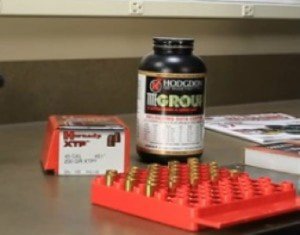
When it comes to loading centerfire metallic cartridges, a good rule of thumb is that the lighter the load is, the faster your powder should be. This is why smaller pistol cartridges require very fast powders. Not only does the lighter bullet spend less time in the barrel, but the barrel is also shorter, to begin with. This requires you to use a powder that will complete its burn by the time the bullet has left the barrel.
Using a slower powder in a scenario like this would cause several issues. The first is reduced velocity. Since the powder has not completely burned by the time the bullet leaves the barrel, it has not produced the proper pressure needed to get the bullet to the required velocity. This can also cause action malfunctions in semi-automatic firearms. Second, it will cause increased muzzle flash and noise. Since the powder is finishing its burn while there is no bullet in the barrel to contain it, it is free to burn brightly outside the barrel as well as produce a lot more light and noise.
On the contrary, a magnum rifle load such as .50bmg propels a very heavy bullet down a very long barrel. This gives the powder plenty of time to complete its burn and makes it much more optimal to use a slower powder. Using a fast burning powder in this scenario has the possibility of causing a dangerous chamber pressure spike, which could cause a catastrophic failure.
Weighing Your Powder
Once you’ve selected the proper burn rate, the next important step is knowing how to weigh your powder charge. Knowing the proper units and how to weigh your charges is very important. Charging a case with too little powder can cause a multitude of problems, such as low bullet velocity, incomplete cycling and malfunctions in semi-automatic firearms, and worst of all, squib loads. Squib loads are particularly dangerous if the shooter does not realize it, and continues to fire another round. This causes a buildup of obstructions in the barrel, which almost always results in a catastrophic failure.
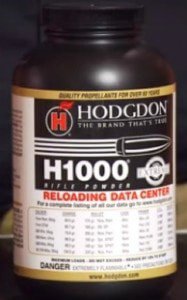
Charging a case with too much powder is significantly more dangerous. This will always cause elevated chamber pressures, and more often than not results in a catastrophic failure. Overcharging your rounds is one of the most dangerous things that a reloader can do, and as such it is very important to pay attention and to know what you are doing when you go to charge your cases.
When you consult your reloading manual, you will note that all of your powder charges are listed in grains. A grain (gn) is a unit of measurement that is used almost exclusively in the reloading world and is a very light unit of measurement. There are 437.5 grains in an ounce, and your 1 pound canister of powder is equal to 7,000 grains. Typical powder charges can range from 3 or 4gn in a light handgun load, to well over 100gn in a magnum rifle load. This is why it is very important to consult your loading manual before deciding on a powder charge.
Since charging the cases is such a critical step in the reloading process, it is very important to be as accurate as possible when it comes to weighing the powder. There are products out there (such as the Lee powder dipper) that allow you to use what is essentially a measuring spoon to measure your powder charge. When using these products, there is a large variance in your weights (often several grains). While this isn’t a big deal if you are mass producing plinking ammo, if you are going for any level of accuracy this is a big no-no. There are other volumetric powder measures out there with varying degrees of accuracy, but it is always a best practice to weigh your powder charges on an accurate scale before charging the case. This does slow down the reloading process, but it ensures that you always have an accurate powder drop, and gives you the most reliable and accurate ammunition possible.
How to Store Your Powder
First and foremost, reloading powder should be stored in a cool, dry place. The most important factor to consider when storing your powder is keeping it dry. Powder that is, or has been wet can cause major inconsistencies and can cause your velocities to vary, as well as being straight up unreliable. Most importantly, bad powder is a big cause of hang fires. A Hangfire is when the gun strikes the primer as normal, but there is a slight delay between the primer strike and the discharge of the round. This delay can range from a fraction of a second to several seconds later. This is obviously very dangerous and should be avoided at all costs.
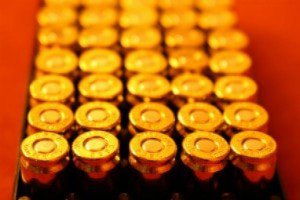
The best to store your powder is always going to be inside of a climate controlled building. Keeping it out in the garage or a shed is never a good idea, as temperature fluctuations can cause condensation which will ruin your powder. Many people store powder in their basement, but if you elect to go this route, be sure that you have a dehumidifier, or live in a dry area. The main thing to remember is that your powder needs to be kept at a cool, constant temperature, and be kept as dry as possible. This will ensure that your powder stays in good condition for a long time.
How Long Will Powder Last?
If you follow the proper storage guidelines, unopened smokeless gunpowder has an infinite shelf life. As long as you keep it cool and dry, and away from any major temperature fluctuations, even opened powder will last a lifetime and then some. Modern smokeless powder is designed to be very shelf-stable and deteriorate very, very slowly. While improper storage can accelerate the deterioration of powder, keeping it cool and dry will make it last almost forever.
I have personally fired ammunition loaded with powder that is well over 50 years old, and had great results. Thankfully, it is also relatively easy to tell if gunpowder is no longer in good condition. For starters, powder that has deteriorated will emit an odor that is similar to muriatic acid, while powder in good condition will smell like ether, alcohol, or another stabilizing solvent. It should also be a dark gray in color. Any changes in color or order, no matter how slight, indicate that the powder should probably be disposed of.
The container is also another good indicator of the condition of the powder. If it is free of corrosion and looks like it was just pulled off of a store shelf, it is probably in good shape. But if the container shows signs of rust, water damage, or corrosion, especially around the lid, then you will be better off disposing of it. Old, bad reloading powder can be disposed of by either burning it in a safe manner or spreading it on your lawn or garden. Believe it or not, reloading powder is rich in nitrates, which makes it a great fertilizer!
More Related Buyers Guides:
How To Choose Your Powder
Type of Cartridge
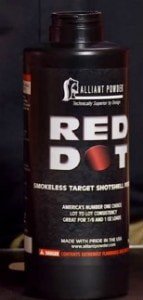
Now that you know a little bit about where to get your powder, burn rates, how to weigh your charges, and how to properly store your powder, it’s time to choose the right powder for you! The best way to go about this is to consult a reloading manual for the best suggestions, but knowing the type of cartridge and bullet weight that you want to reload can get you a general idea of what you need.
Shotgun
Reloading your own shotgun shells is going to require some of the fastest powder that there is. You will want to pick a powder that goes well with the type of shell, wad, and shot type, as well as size and weight. There are a lot of factors that go into choosing the perfect powder for your shotgun loads, so it is best to start with a fast burning powder and consult a reloading manual for more specific suggestions.
Rifle
Due to the wide variety of bullet weights and cartridges, rifle loads can use a wide variety of powders. For the most part, rifle cartridges are going to use powders in the medium to slow range. Again, it is very important to match the powder type and charge weight to your cartridge type and bullet weight. All of this is information that is readily available in any reloading manual.
Handgun
Handgun powders make up a much smaller subset than rifle powders, with a few of them being interchangeable. For example, H110 powder is a good middle range powder that works well in both magnum handgun loads and light rifle loads. As a general rule, handgun powders will be much faster than rifle powders, and will also vary based on the same factors: bullet weight and cartridge type. As with rifle powders, it is best to consult a reloading manual for exact charge weights and powder types.
Projectile Weight
Projectile weight has one of the biggest impacts on not only powder type selection but charges weight as well. Because larger, heavier bullets travel at a much slower velocity, they spend much more time in the barrel. This requires the use of a slower powder in order to minimize chamber pressure spikes. On the contrary, smaller, lighter bullets travel at a much higher velocity, and as such require a faster burning powder in order to complete the burn before it exits the barrel.
Best Reloading Powders on the Market in 2025
Best Powder for .223:
Hodgdon H4895
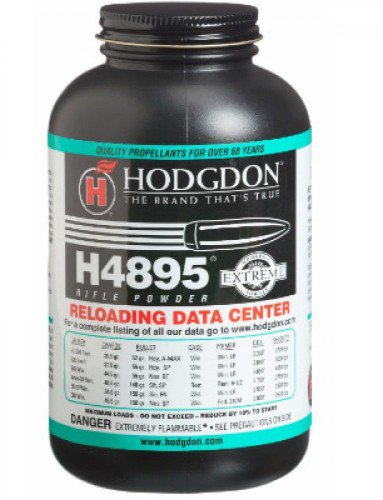
If you are looking for a good powder to load .223 rounds for your bolt gun or AR-15, it’s hard to go wrong with Hodgdon‘s H4895. While this Hodgdon powder will work great with just about any .223 load, it really shines with the heavier bullets. H4895 does a great job of pushing those heavier bullets up to the required velocity. One downside to H4895 is that it isn’t a very clean burning powder. It is far from the dirtiest, but you should probably expect to up your cleaning schedule a bit, especially if you are running it through an AR or other gas operated semi-automatic rifle. H4895 is most commonly used as a mil-spec duplicate powder, which means that it burns almost identically to the powder used in rounds developed for the military. If you are looking to duplicate those loads, or load with heavier bullets, and don’t mind doing a little extra cleaning, then H4895 may be the best powder for 223 for you.
Pros:
- Military duplicate powder
- Meters well
- Accurate
- One of the most versatile reloading powders
Cons:
- Burns dirty
- It is popular, so can be hard to find in stock at times
Best Powder for .308:
IMR 4064
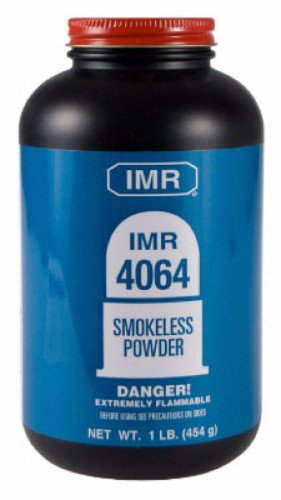
If you are looking for a good powder to reload 308, especially for an AR-10, then you may want to look into IMR 4064. This powder is fairly decent over a few calibers but does have a pretty limited range as to what it can do. For .308, however, it works great. It is clean burning, which makes it ideal for use in direct impingement gas operated firearms, such as the AR-10. Another bonus with this powder is that it meters very well. While this is not a substitute for double checking your charges, you will find that this powder will meter much more accurate charges than some of the others. This is also a very dense powder, which means that it takes fewer grains to achieve the same results as other powders. This makes it an ideal candidate for other rounds that require a lot of powder but have a small case volume. If you are looking for a good, clean burning powder that meters well and is relatively easy to find in stock, then you may want to give IMR 4064 a try.
Pros:
- Meters well
- Burns clean
- Easy to find
Cons:
- Limited usage
Best Pistol Powder (General Purpose):
IMR Trail Boss
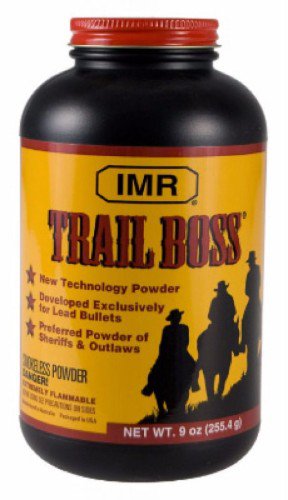
If you are concerned about safety and looking for a good quality all around pistol reloading powder, then IMR Trail Boss may be for you. Trail Boss is designed for lower velocity rounds and has a very high load density. This means that it is almost impossible to double charge cases. This makes it a very popular option for people with progressive presses who don’t have time to check each individual case for an accurate powder drop. The downside to this is that Trail Boss is not good for hot loads in handguns with a small case volume. Due to the high load density, there may not be enough room in the case to hold all of the powder that you need to reach your required velocity. As always, it is best to consult your reloading manual to see if this is the case for your specific requirements. One thing is for sure, and that is that Trail Boss is one of the safest powders that you can choose for your handgun loads. If you worry about double charges on your progressive reloading press, then you will be able to rest easy when you reload with Trail Boss.
Pros:
- High load density
- Almost impossible to double charge
- Great for low-velocity loads
Cons:
- Not good for high-velocity loads
- Not good for cartridges with a low case volume
Best Shotgun Powder (General Purpose):
Alliant Red Dot
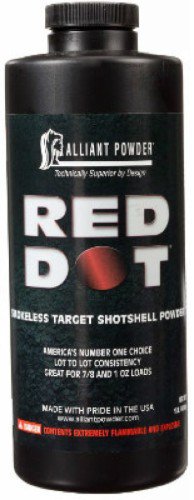
If you are looking for a good, clean burning, general use shotgun shell powder, then Red Dot from Alliant is worth looking into. Red Dot is good as a universal powder for loading shells in the 1-ounce range. This is a good all-purpose load range, but if you are wanting loads in the ounce and a quarter range, then you are better off getting a different powder. Most of the time, 1 ounce of shot is plenty, and Red Dot is great for that. This makes it perfect for sporting clays, trap, skeet, and light field loads. Realistically, Red Dot can cover all but the large magnum and specialty hunting loads.
Add in the fact that it is clean burning and relatively easy to find, and you have a good powder to start with. Another benefit to Red Dot is that it can be used in centerfire pistol cartridges as well. This makes it a great powder to keep on hand, as it can be used with a wide variety of loads. If you are looking for a great powder that has a lot of uses, then Red Dot from Alliant may be for you. From reloading 12 gauge shells to most other sizes this is a good one.
Pros:
- Can be used for pistol rounds
- Easy to find
- Clean burning
Cons:
- Not good for heavy field loads
Best Rifle Powder (General Purpose):
IMR 4350
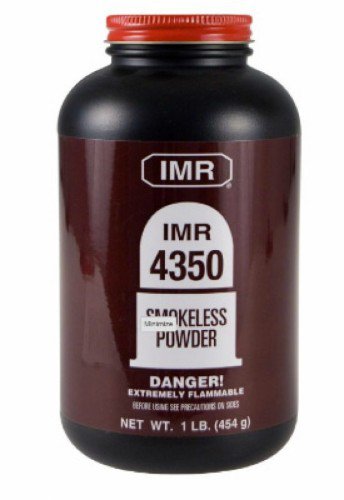
If you are looking for a good rifle powder that works great over a large range of calibers and bullet weights, then IMR 4350 might be a good place to start. I have used IMR 4350 in everything from lighter small rifle loads, to small magnum loads for deer hunting with excellent results. IMR 4350 is versatile and very accurate and is my general go-to powder for most of my rifle loads. IMR 4350 flows and meters very well in most powder measures, primarily due to it’s larger granule size. One downside is that due to it’s larger size, drops from a volumetric powder measure may be slightly inconsistent. If you are wanting to load up match-grade rounds, you may need to take a little bit of extra time in order to verify the weight of each charge on a powder scale. IMR 4350 really shines in the calibers that are most suited North American game. If you are a hunter looking for a good quality powder that will work in a variety of loads, then IMR 4350 would be a good powder to keep on hand.
Pros:
- Can be used in a wide variety of cartridges
- Quality, accurate powder
Cons:
- May not meter as accurately as other powders
- Not good for very light loads or heavy magnum loads
Best Magnum Handgun Powder:
Hodgdon H110
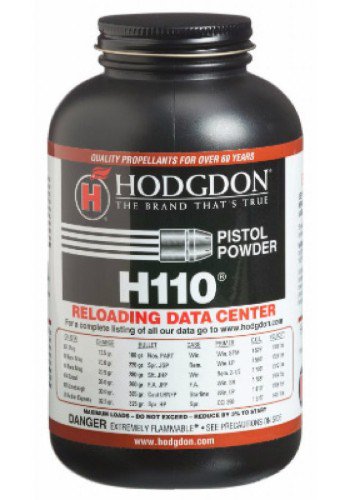
If you are looking for a great powder that can fill a lot of different roles, then H110 is a good powder to consider. H110 really shines in (and was designed for) magnum handgun loads. I have personally used H110 in .454 Casull with great success, but it is also a great powder for .357 magnum and .44 magnum, as well as many other large bores, powerful handgun cartridges. One downside to H110 is the granule size. H110 is a very small powder, and as such it does not like to meter very well. I have occasional problems with leakage out of my powder measure, and it does tend to make a mess. Most of these problems can be mitigated with proper adjustments or a higher quality measure, but if you do use H110 be prepared to tinker with your powder measure. H110 is towards the slower end of the pistol powder range, which also allows it to pull double duty as a light rifle powder. I also use H110 in my .300 Blk handloads, most often behind a 115gn bullet. In fact, this past deer season my wife used a 110gn Hornady Vmax bullet over H110 powder to take her first rifle season whitetail deer! Whether it is the on the range or in the field, H110 can fill many roles and is a great powder to keep on hand.
Pros:
- Can be used for both rifle and handgun loads
- Fairly common and readily available
Cons:
- Does not meter well
- Messy to use
Best Magnum Rifle Powder:
Hodgdon H1000
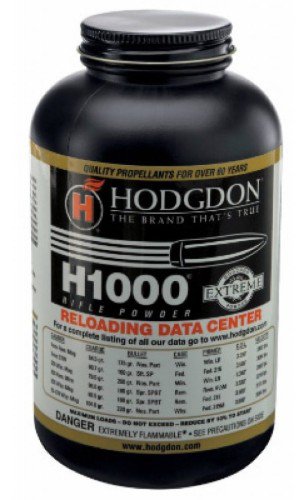
If you are loading large magnum rifle cartridges such as .338 Lapua Magnum and .50BMG, H1000 is a good powder to start with. It can also be used with some smaller magnum cartridges as well, with less desirable results. I have loaded it in .270 Winchester with acceptable results, but it really shines in the larger magnums. One thing to keep in mind is that you will be going through large quantities of this powder. I typically drop anywhere from 90 to 100 grains of H1000 at a time when I load .338 Lapua, so a measly pound doesn’t last very long. Buying a one pound container is great to try out this Hodgdon powder and work up a load, but if you do decide to load with this powder long term, it is best to stock up with a much larger jug. Overall, H1000 is a great powder to pick up and keep on hand, as more than likely you will be able to find something that will use it. From hunting large game to extreme long range shooting, this is a good powder to load with.
Pros:
- Meters well
- Accurate powder
Cons:
- Requires large charges for magnum loads
- Not suitable for lighter rifle loads
Best Reloading Press Powders Final Thoughts
Let’s face it: if you really want to get serious about your reloading, you have really got to know your powder, and what it can do. Each caliber and each load is going to have a powder that works best, so we have provided you with a good starting point for most of the loads already out there. To pick your perfect powder, you are going to need to match burn rate, granule size and charge weight with your caliber and projectile weight. It is also best for you to consult a reloading manual before you begin to make sure that your loads will be both safe and effective. While most powders will work for most loads, the powders listed above are tested, tried, and true, and have the testing and data to back them up. So now that you have all the information that you need, you can get your powder and start reloading today!
Thank you for visiting Reloadingpresso.com. If you like any of the equipment that you see in this article, please click on one of the Buy Now buttons to make your purchase on Amazon. As an Amazon affiliate, we make a small commission off any purchase made from a click through from our website, which is how we are able to provide you with these informative articles. You will not pay more on Amazon by clicking through our website because the price is the same as if you go to Amazon directly. If you’re looking for more than what you see here, please review our Best Reloading Kit Buyers Guide and our Best Gun Safe Buyers Guide.
Even More Related Buyers Guides:
- Best Hand Priming Tools For Reloading 2025 [4 Picks Be Careful]
- Do It Right! 3 Best Reloading Manuals 2025 [For Everyone]
- Press Away! 4 Best Turret Reloading Presses 2025 [More Ammo]
- Less Cash, Better Shot! 7 Best Reloading Presses 2025 [Beginner to Elite]
- Outta Ammo? 5 Best Progressive Reloading Presses 2025 [Quick]

Dan is an avid outdoorsman and shooter who developed a passion for firearms at an early age. When you can’t find him in the field chasing birds or big game, you can find him at the range shooting various competitions such as 3-gun, IPSC, and IDPA. He also enjoys manufacturing his own ammunition, as well as both working on, and building his own firearms. Dan has many years of firearms experience, and enjoys helping people find the right gear and sharing his extensive firearms knowledge.

